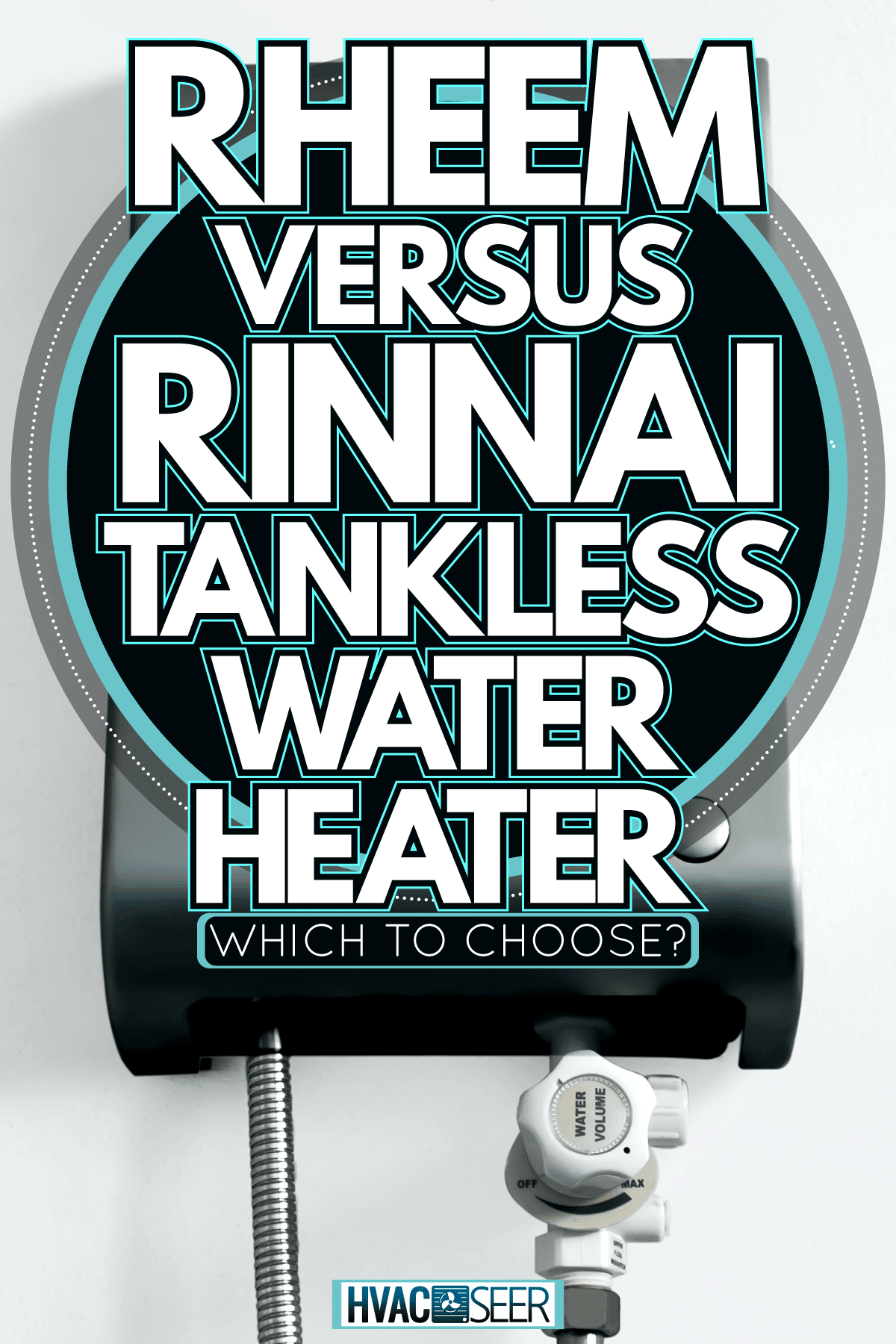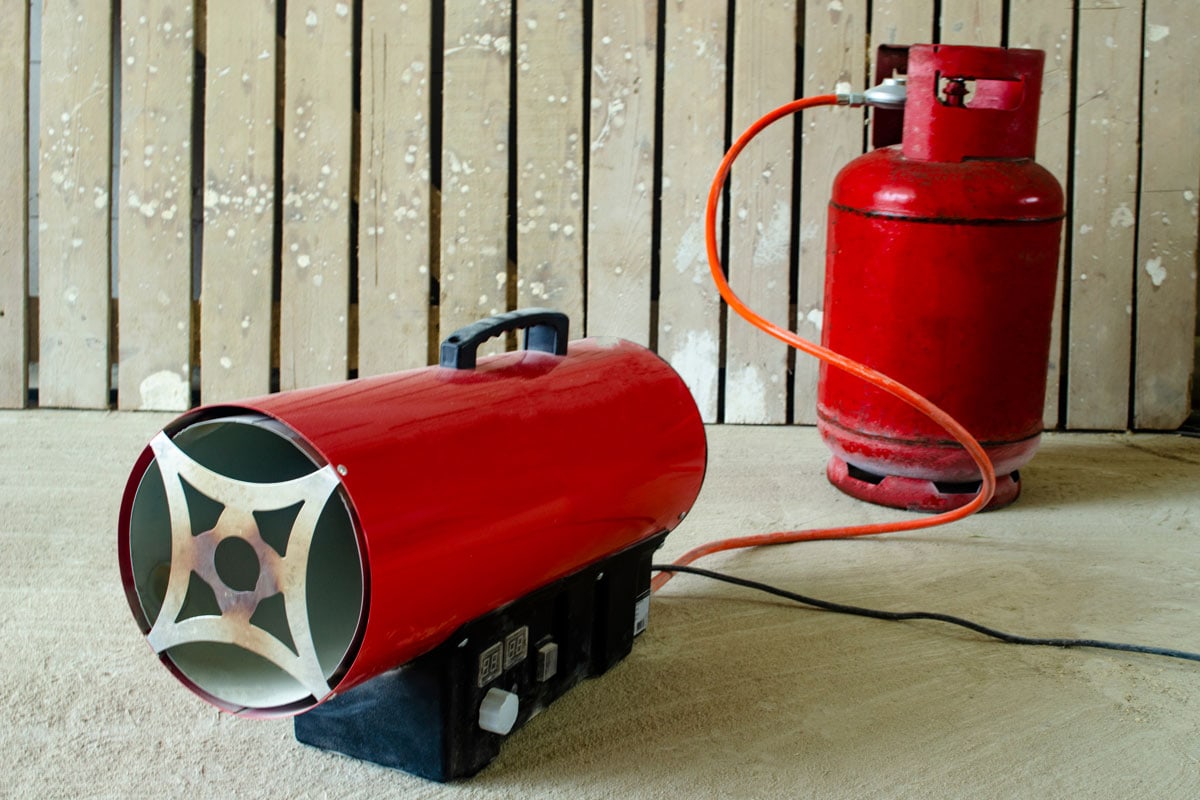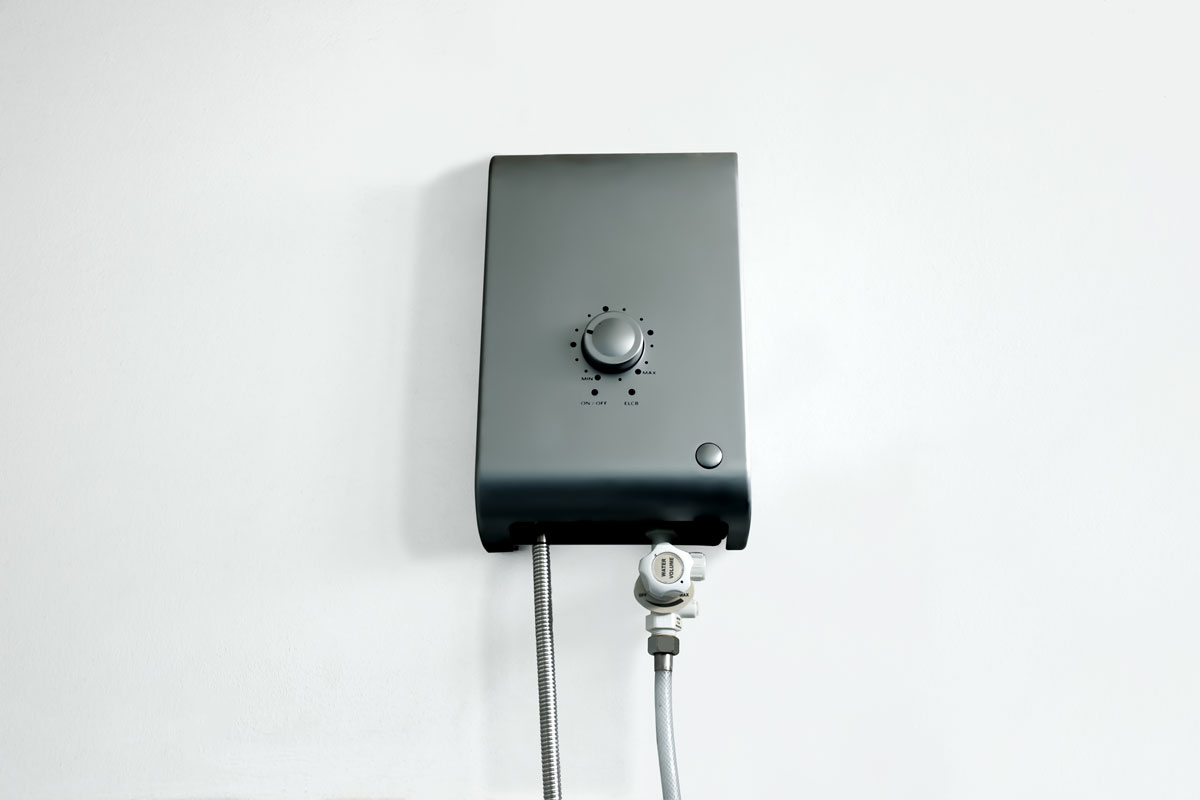There are many different tankless water heater brands available, but two of the most well known are Rheem and Rinnai. If you’re trying to decide between the two brands and need further information, you’ve found the right post! We’ve researched everything you need to know to make an informed decision on which tankless heater to choose.
If you're looking for a tankless water heater with an affordable price and wide range of options, then you should choose Rheem. However, if you want high hot water demand, a durable product that will last for many years, advanced features such as WiFi and voice control, and you're willing to spend a bit more, then you should go with Rinnai.
By the end of this article, you’ll know about the differences between Rheem and Rinnai's tankless water heaters. You’ll also know about each factor that needs to be considered in choosing the right one for you. So keep reading!

History of Rheem and Rinnai
In the 1920s, Rheem was founded in the United States. The company's corporate headquarters is in Atlanta, Georgia.
They specialize in heating, ventilation, and air conditioning (HVAC) systems, along with boilers and water heaters for residences and commercial buildings. Since 1958, Rheem has operated in New Zealand, with its NZ headquarters located in Avondale, Auckland.
Rinnai is based in Nagoya, Japan. Two childhood friends founded it in 1920, with its first offering being an oil-based cooking stove.
The product line expanded to include gas stoves, ovens, and heaters. They now focus on providing commercial, residential, and water heating services. Since 1975, Rinnai has operated in New Zealand, with its NZ headquarters located in Mangere, Auckland.
With a concentration on plumbing, heating, and appliances, both Rheem and Rinnai continue to grow internationally.

Rheem vs Rinnai Tankless Water Heater
Both Rheem and Rinnai have a huge selection of tankless heater products. Here are a few more specifics on how they contrast:
Product Quality
- Rheem: Rheem tankless heaters are of average quality. Some are composed of copper, while others feature heat exchangers made of stainless steel. The durability of the devices is generally compromised by stainless steel's increased susceptibility to rusting.
- Rinnai: Products from Rinnai are of exceptional quality. Compared to other tankless heaters on the market, they can last twice as long.
The fact that Rinnai tankless heaters are equipped with copper heater exchanges, which are more flexible and increase the heaters' durability, is one of the factors contributing to their longer lifespan.
Power Source
- Rheem: Propane, gas, and electric models available.
- Rinnai: Only propane and gas available.
Flow Rate
- Rheem: Each product has a different flow rate, with smaller ones ranging from 0.9 gallons per minute (GPM) to 3GPM and larger ones ranging from 6GPM to 9.9 GPM.
Click here to see this Rheem 5.3 GPM on Amazon.
- Rinnai: The flow rate for water heaters is higher and ranges from 6.3GPM to 11GPM.
Click here to see this Rinnai 6.5 GPM on Amazon.
Power Input
- Rheem: 11,000 BTU up to 190,000 BTU
- Rinnai: up to 4.3M BTU
Indoors/Outdoors
- Rheem: Indoor only.
- Rinnai: Flexible on both indoor and outdoor.
Features
- Rheem: While some Rheem tankless heaters do not feature a temperature display, some do have an LED or digital temperature display. Some digital displays contain features including temperature settings, an ON/OFF dial control, and a maintenance code display in addition to the conventional temperature display.
A condensate neutralizer is integrated into a few models, such as the Professional Prestige Series 95 GPM Outdoor Tankless. Self-modulating power regulation is available on the RTEX-08, RTEX-11, and RTEX-13 models from the Professional Classic Series.
Click here to see this Rheem RTEX-13 on Amazon.
Rheem tankless water heaters with the most advanced features, such as built-in condensate neutralizers and compatibility with recirculation pump kits, greatly cut down on installation costs and heating time.
- Rinnai: Recirculation is a function found on every Rinnai tankless water heater. Others require you to purchase the ThermaCirc360 kit separately. Some come with it fully installed. You may customize ThermaCirc360's recirculation patterns to fit your lifestyle and routine.
A digital display capability is available on some models, such as the HE+ Series RL models and SE Series RUCS-Models, but not on others, such as the HE Series V-Models. Some Rinnai tankless water heaters also come equipped with fast access isolation valves, Wi-Fi connectivity, and voice control.
Range
- Rheem: 35 tankless water heaters available.
- Rinnai: 15 tankless water heaters available.
Warranty
- Rheem: Warranties range from six months to a lifetime warranty, depending on the product.
- Rinnai: For residential installations, heat exchangers are covered by a 12-year warranty, as well as 1-year labor and 5-year parts warranty.
Cost
- Rheem: $370 up to $3000
- Rinnai: $600 up to $3000
Factors To Consider In Choosing Tankless Water Heater

That was a general overview of Rinnai and Rheem water heaters. Ultimately, you must assess what your particular demands are before choosing a unit to purchase. Take into account the following:
Fuel Type
Following are the three primary fuel types for a tankless water heater:
Propane Gas

This is the priciest fuel option, and it frequently cannot be piped into a home. Since tankless water heaters take up less space, it is probable that you will need to buy a fuel tank for one.
The energy output from these water heaters is the best; propane even offers more energy than natural gas. Because liquid propane is so portable, tankless propane water heaters are ideal for use in recreational vehicles.
Natural Gas
With the extra ease of direct piping into many homes, natural gas is more affordable than propane and electricity. This design is ideal for a long-term investment because the cheaper price of natural gas will eventually pay for the unit.
This is also a suitable option for households with high demand. However, because natural gas is difficult to store, these types are unsuitable for use while traveling in an RV or at a campsite. Additionally, natural gas may not be piped into your house. If this is the case, installing a line into your home will cost extra money.
Electric
This is the least expensive option for initial purchase and installation. But the cost might quickly catch up to this option due to high electrical requirements and lower overall power output.
It's vital to remember that electrical models have an efficiency rating that is roughly 10% higher than their gas counterparts. Therefore, compared to a gas model, an electrical model can save more energy overall.
However, the price can be higher depending on how much gas costs now compared to electricity in your region. An older home might not be able to fulfill the high power requirements for electrical models.
A new design or an expensive electrical system update may be required if the existing electrical system does not match the manufacturer's requirements.
Flow Rate/Water Demand
The highest flow of hot water that can be produced by the tankless water heater depends on the flow rate. Each fixture (such as a bathtub, shower, sink, etc.) uses a specific amount of this flow, which is measured in GPM.
Tankless water heaters with flow rates of 7.5 to 8 GPM should be considered for homes with more than four people, while flow rates of 3 to 5 GPM should be sufficient for homes with less than four persons.
Consider the total volume of water consumed by the family when calculating the flow rate. A lower flow rate is sufficient if only one shower, sink faucet, clothes washer, etc. is ever used at once.
However, a reduced flow rate cannot concurrently supply hot water to all appliances if multiple showers, a dishwasher, a clothes washer, and a few sinks are running.
Condensing/Non-condensing
A tankless water heater's fuel-burning produces steam or water vapor as a byproduct. Ventilation ducts or piping allow the steam to escape to the outside. When the steam is released is what distinguishes condensing from non-condensing.
Condensing
The condensing unit in condensing tankless water heaters collects and reuses the heat from the exhaust before releasing a considerably cooler exhaust through ventilation channels to the outdoors. Although more expensive, this design uses less ventilation material and has an efficiency of roughly 98%.
Click here to see this Rinnai condensing tankless heater on Amazon.
Non-condensing
These tankless water heaters will release the steam right away, so the ventilation materials must be able to tolerate hot steam traveling through the ventilation channels at high temperatures. The expense of these premium materials means that installation costs may be greater.
Click here to see this Rheem non-condensing tankless heater on Amazon.
A rating of roughly 80 to 85% efficiency is also the result of the heat that is lost during the rapid venting of this steam. Non-condensing water heaters will cost less to buy, though.
Indoors/Outdoors

When deciding where to place your tankless water heater, you have many alternatives. Since they occupy such a small amount of space, they provide significant space savings. You can't just put an indoor model outside, so you need to carefully evaluate where you would prefer to install your on-demand water heater.
There are several benefits to choosing an outdoor tankless water heater, but you must live in a region of the country where there aren't many days with below-freezing temperatures.
Even though many exterior tankless water heaters include freeze protection, the efficiency of your unit will be affected if it is continuously chilly where you live.
Final Thoughts

The best brand for you will depend on several factors. In terms of quality, both brands are excellent. So the deciding factor here is your preferences.
Rheem could be an excellent option if you have a limited budget for a tankless water heater. However, a Rinnai, which costs somewhat more, may be what you need if you want a tankless water heater with multiple functions.
Be sure to check out some of our related posts below.
How Long Does It Take To Install A Water Heater?
How Much Does It Cost To Move Water Heater?





